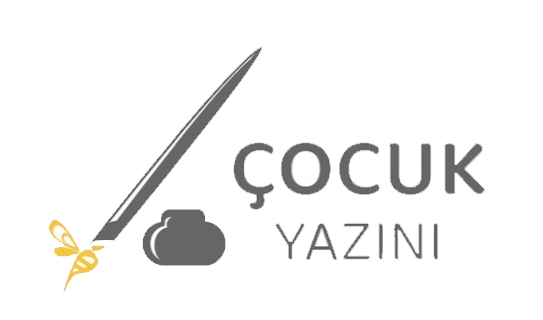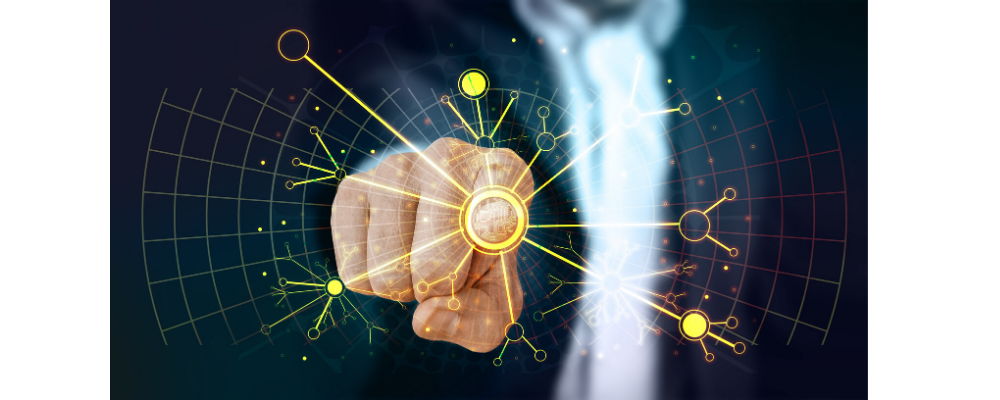For the minds of children, technology is an abstract notion which is composed of games and videos, and is hard to describe.
For the minds of children, technology is an abstract notion which is composed of games and videos, and is hard to describe. It is difficult for children to expect to suffer from an environment they hardly know or to meet something unpleasant there. In this regard, one of the most appropriate ways for parents to teach them something is to get help from tales. I Learn Digital Footprint is a didactic tale that is able to the attention of children who grow up with the technology. In the tale, Yeşim Özen tells the story of a techno-rabbit named Tata and a little girl Tina, who spends most of the time by playing video games with a great admiration–it is the case almost in every house in today’s world. Considering that the book is a children’s book dealing with the theme of technology, the illustrations are as important as the context. Images of techno-rabbit Tata, which is illustrated by Oğuzhan Seçir with confidence and technologic accessories, may attract readers’ attention.
Generally speaking, the main character Tina is a kid, who loves technology, spends most of the time by dealing with a computer, tablet computer and game console. As it is the case in the most families in the real world, Tina’s parents are unhappy with her situation and try to encourage her to play games in the garden with her friends. The meeting with techno-rabbit Tata takes place when Tina plays games with her friends in the garden. It is striking that only Tina is able to see Tata among all others. Tata is made visible only to the children obeying their parents. We often see throughout the text messages that children can easily understand. For instance, only children who sleep at nine and so wishful to see the Lands of Bites where Tata lives, are permitted to go to the Lands of Bites. Though these messages are quite simple, they can be very effective for the children of pre-school age. Tina, who has breakfast on time to get the permission, is represented as an instance for the applicability of the messages of the book.
On the other hand, questions Tina has about Tata start a new adventure to technology for the reader. Tina receives satisfying answers when she asks for each technological accessories which Tata has. Tata’s smart glass is described as the “monitor which enables the connection to internet” and it becomes more descriptive by the writer’s preference to liken it to a monitor. Similarly, Tata uses a smart-watch named as “wrist projection” and its function is “using internet and communication”. These tiny accessories having efficient functions as much as big computer monitors could be accepted as eye-opening details for children. It is very precious that Yeşim Özen introduces these devices in a quite simple and understandable manner to the children of the pre-school level.
The characters' learning of digital footprints as an adventure begins again with Tina's curiosity about where Tata lives. In the journey to the Lands of Bites, Tina encounters with the “Major Data Store” where all the data is stored. At this point, Özen used the principle “from concrete to abstract” as a method for teaching. It is argued in an article on digital stories that it is one of the most crucial duties of teachers to concretize abstract notions and to associate them with events from daily life (Turgut ve Kışla 2015). Herein, drawing a building to explain the data storage is, in my opinion, a good example of “from abstract to concrete” as an educational technique. In the same way, before describing the notion of “digital footprint”, the narration is strengthened by employing examples from the real life. When Tata and Tina enter the Major Data Store to find Tina’s digital footprint, they see a room to which Tina’s name was given. Inside the room, there are all the belongings Tina has had since her birth; whether it be thrown up to the garbage, or it be lost or it be mostly liked by Tina. Though when Tina realizes the belongings she does not like is there, she becomes unhappy and wants to exit, the techno-rabbit tells her that this room is the best place to teach about her internet and informs her about the digital footprint: “Internet is just like this. Nothing that you did, either nice or, is deleted. Everything you did leaves a mark on the internet that is called digital footprint. If you become a careful user, you only see nice things in this room, namely the internet.” The reader learns the notion of the internet by an analogy between the digital footprint and the personal belongings in the room through the method of concretizing.
Apart from all the didactic ideas and social messages, it is one of the problems of I Learn Digital Footprint that it does not critically consider or not arouse awareness about the harms video games, which Tina is addicted, might cause. When they look at Tina’s digital footprint, they see that Tina visited only websites dedicated to games and Tata congratulates her for she does not play games through social media accounts. She informs her about the fact that social media accounts are created by being authorized to access to individual’s private information; hence, there is a possibility that her private information is stored in the digital footprint. Tata warns Tina about not creating a social media account before she is thirteen years old. However, a more detailed warning such that the digital footprint might be accessed by strangers would be more influential for the children of pre-school age. Additionally, it would be better to warn Tina, who was congratulated for not using social media accounts, about the importance of consulting with her parents on the online game sites. In this way, the target of creating awareness would be more achieved. At this point, for parents who will read the book to their kids, it may be more beneficial for children to add something when reading the book out to them. To give an example, when the techno-rabbit Tata congratulates Tina for that she does not have a social media account, it could be added that she needs to be selective in her preference for game websites and should keep herself away from websites her family would not approve.
Considering the short sentences, and simple and fluent language I Learn Digital Footprint is a didactic and entertaining tale for the children of pre-school age. Frequently used in children’s book literature, fast and wise rabbit figure makes the tale very classic; however, the selection of this figure as the main character easily penetrates to the imagination of kids and facilitates children’s process of reaching the theme of the book. When Özen ends the tale, she implies for new adventures to come. For instance, when Tina was leaving the Lands of Bites, she sees the Moon, where the Moon-girl Teni who controls the world technology, and Tata makes a promise to take her there for the next time. Thus, hints for a new adventure, for which the reader would wait in curiosity, are evinced. Making an abstract notion such as technology understandable for children by using concrete examples to create an awareness is should be accepted as a significant contribution to the literature. Besides that, the visual narration and the diversity in colors help children to follow the tale easily and carefully. If there are children around you who are keen on technology and willing to learn, I Learn Digital Footprint is a tale that you can read and tell them easily.
Bibliography
Kışla, T. ve Turgut, G. “Bilgisayar Destekli Hikaye Anlatımı Yöntemi: Alanyazın Araştırması.” Turkish Online
Journal of Qualitative Inquiry, 6(2), 2015. 97-121.
Özen, Yeşim. Tekno Tavşan Tata ile Teknolojik Masallar Serüveni - Dijital Ayak İzini Öğreniyorum. İstanbul:
Abaküs Kitap, 2017.

